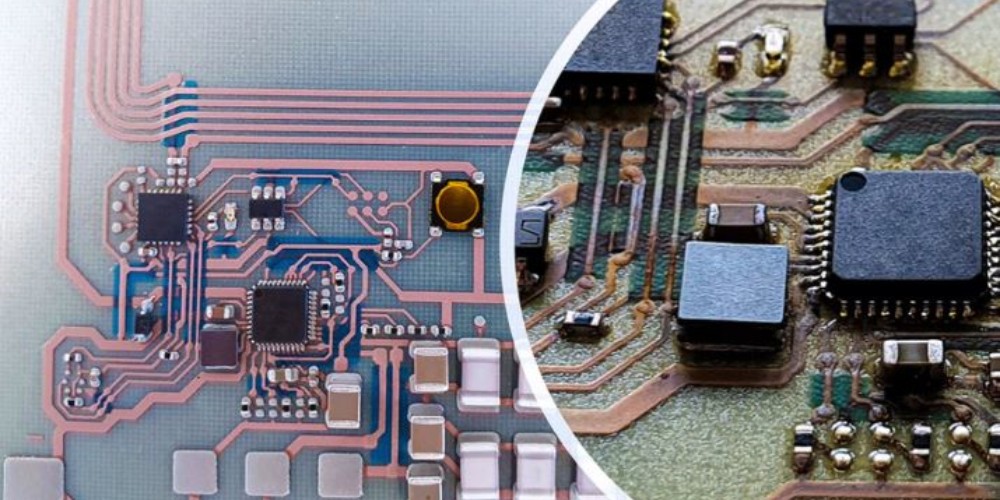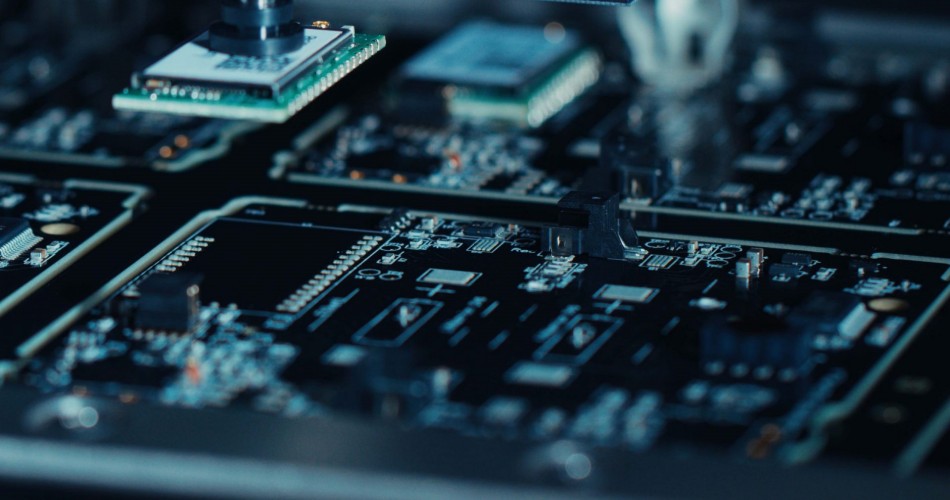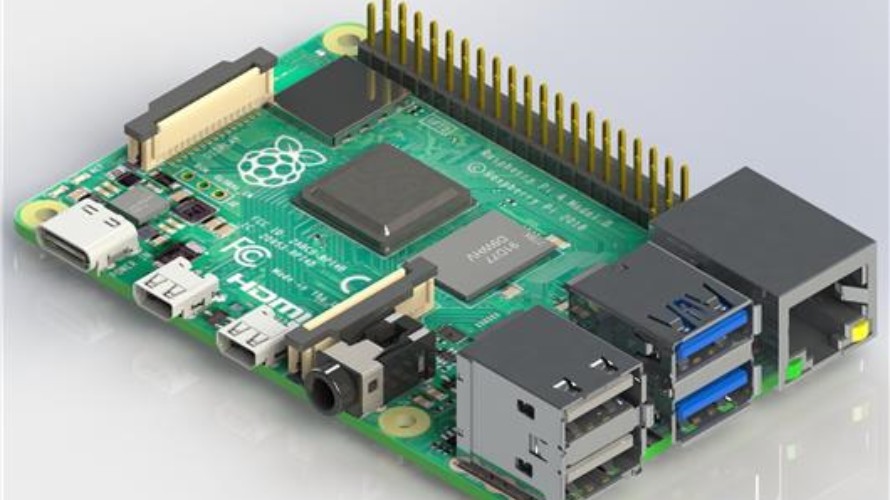The advent of 3D printing technology has opened up exciting new possibilities in manufacturing, including in the production of printed circuit boards (PCBs). 3D printed circuit boards provide a highly customizable and streamlined option for creating complex and compact electronics. In this article, we dive into the top companies pioneering 3D printed circuit boards and the impacts this emerging technology promises to have.
What Are 3D Printed Circuit Boards?
A 3D printed circuit board is a PCB that is fabricated using 3D printing processes, rather than traditional photolithographic methods. In conventional PCB printing, the board design is etched onto copper layers which are then laminated together. With 3D printed PCBs, the conductive traces are built up layer-by-layer using 3D printing techniques.
Some of the benefits of 3D printed circuit boards include:
- Design freedom – 3D printing allows for more complex geometries than can be achieved with traditional 2D PCBs. Curved, twisted or folded boards are possible.
- Fast prototyping – Designs can be iterated quickly by uploading a new file version for printing. No etching or masking steps are required.
- Customization – Bespoke designs can be catered to the exact spatial and connectivity requirements of the application.
- Compactness – Overlapping circuit paths and components allow for a high density of electronics to be packed into a small space.
- Cost – Low setup costs and no need for retooling makes 3D printed PCBs very economical for small batch production.
The technology is still emerging but promises to revolutionize electronics manufacturing. Next we’ll look at the top companies pioneering this technology.
Top 3D Printed Circuit Board Companies

Nano Dimension
Nano Dimension is an Israeli company that has developed specialized 3D printers for fabricating multi-layer PCBs. Their DragonFly system uses inkjet printing to deposit conductive and dielectric inks layer-by-layer to build up circuitry.
Some key features of their technology:
- Proprietary inks include nanoparticle silver and gold for conductors and a customized dielectric polymer.
- Precision printing with line widths down to 100 microns.
- Up to 18 conductive layers can be printed, INTERCONNECTED BY VIAS.
- Components can be embedded during printing.
- Integrated design-for-manufacturing analysis checks designs for printability.
Nano Dimension printers have been used by companies like Harris Corporation to print multilayer satellite communications circuits and by academic researchers to print flexible PCBs.
Optomec
Optomec offers 3D printed electronics services powered by their proprietary Aerosol Jet technology. This works by atomizing an ink into an aerosol mist and depositing the droplets onto a substrate.
Key capabilities include:
- A wide range of printable materials – conductors, insulators, semiconductors, even biological materials.
- Line widths down to 10 microns are possible.
- Can print interconnects between layers to create 3D circuitry.
- High-resolution additive and subtractive printing modes.
- Used to print sensors, antennas, batteries, capacitors and more.
Optomec has partnered with Hensoldt for printing conformal antenna arrays that can be integrated into the curved surfaces of aircraft. Their process is also being used by the U.S. Army Research Laboratory to print flexible circuits for drones.
Voxel8
Voxel8 developed the first multi-material 3D printer capable of embedding electronics into 3D printed parts. Their system uses fused deposition modeling for the substrate material and piezo inkjet printing for conductors and dielectrics.
Features of their technology:
- Can pause mid-print to insert components into the evolving part.
- Wide range of compatible substrate materials – PLA, ABS, elastomeric.
- Silver nanoparticle ink provides high conductivity traces.
- Print head deposits droplets as small as 1 picoliter.
- Embedded electronics can include sensors, antennas, resistors, capacitors etc.
Voxel8 allows products to be fabricated with fully integrated electronics in a single 3D print cycle. The company has worked with partners like Ford on manufacturing LED light arrays and shoe maker New Balance to print force sensors into shoe soles.
Applications of 3D Printed Circuit Boards

Some of the emerging and potential applications leveraging 3D printed PCBs include:
Wearable Technology
Wearable devices call for electronics that are flexible, lightweight and ergonomically designed. 3D printed circuits that can conform to natural contours are ideal for smart watches, health monitors, augmented reality glasses and assistive technology for people with disabilities. 3D printing allows sensors and interfaces to be seamlessly integrated into wearable products.
Internet of Things Devices
As more everyday objects become embedded with electronics for connectivity and smart functionality, 3D printing provides a means to cheaply customize circuitry for these internet of things devices. From household appliances to factory machines, this facilitates the addition of sensors, displays, wireless modules and data processing abilities.
Biomedical Devices
3D printed flexible electronics open up new possibilities for minimally invasive diagnostic and therapeutic medical devices. Catheters with sensors printed along their length allow greater internal mapping and precision. Electrode arrays tailored to brain or nerve contours improve interfacing for prosthetics and neural implants. 3D printing even enables printing biological materials like proteins, cells and drugs alongside electronic components.
Aerospace and Defense
Militaries are keenly interested in 3D printed electronics like conformal antennas with directional beam steering abilities for aircraft and drones. Rugged circuitry that withstands G-forces and harsh environments is also important for satellites, missiles and other defense systems. On-demand printing of replacement parts with embedded functionality aids field repairs.
Automotive
Automotive applications range from printing lines of heating elements onto car windshields for de-icing to fabricating customized circuit boards for self-driving vehicle systems. 3D printing enables lightweight PCBs integrated into door panels or dashboards for proximity and touch sensors. The flexibility of form factors and rapid design iterations makes it ideal for concept cars and prototyping.
Robotics and UAVs
For robotics and commercial drone systems, weight and size constraints are critical design factors. 3D printing provides a compelling solution for fabricating compact, multi-layer circuitry that can be conformally built around other components. Routing critical signals using 3D traces instead of external wires saves weight and space while reducing noise. Rapid turn-around of prototype boards also accelerates development.
The Future of 3D Printed Electronics
3D printed electronics are still an emerging technology but progress has been swift. While there are still challenges to be addressed such as print resolution, material options and quality control, the benefits are significant. As this manufacturing method matures, we can expect wide scale impacts across many industries such as:
- Agile manufacturing – No need for retooling allows rapid switching between circuit designs and custom jobs. Electronics can be manufactured on-demand.
- ** Supply chain consolidation** – Printing conducted locally reduces reliance on external PCB suppliers and long supply chains. This also improves security and intellectual property control.
- Product innovation – 3D printing enables form factors not possible with existing electronics fabrication techniques. Inventing new products and embedding functionality becomes far easier.
- Product customization – Bespoke electronics tailored to the exact use-case requirements becomes a reality. Even circuits customized to an individual user can be economically produced.
- Cost reductions – Setup costs and material waste are minimized compared to conventional manufacturing. Economies of scale may drive costs lower still.
We can expect a vibrant future as 3D printed electronics evolve from prototypes into mainstream commercial products. The companies pioneering this technology today are laying the foundation for that exciting future trajectory.
Major 3D Printed Circuit Board Companies Comparison
| Company | Print Technology | Materials | Resolution | Benefits |
|---|---|---|---|---|
| Nano Dimension | Inkjet | Nanoparticle inks | 100 microns | Multi-layer circuits embedded components |
| Optomec | Aerosol Jet | Variety of inks | 10 microns | Wide material range high resolution |
| Voxel8 | FDM + inkjet | Plastics, nanoparticle ink | 1 picoliter droplets | Multi-material integration components embedding |
Frequently Asked Questions (FAQs)
Here are some common questions about 3D printed circuit boards:
Q: Are 3D printed circuit boards commercially available today?
A: Yes, there are companies like Nano Dimension, Optomec and Voxel8 that currently offer 3D printed circuit board printing services or systems for sale. However, it is still an emerging technology so has not seen mass adoption yet.
Q: Are the performance characteristics comparable to traditional PCBs?
A: Most 3D printed boards may not match top-end traditional boards in terms of factors like speed and thermal management yet. But the technology is rapidly advancing. And for many applications, the benefits of design flexibility and embedded components outweigh raw performance metrics.
Q: What materials are used to print the traces and insulation?
A: Conductive traces are usually printed using inks containing nanoparticles of silver, gold or copper. Various polymers like modified acrylics are used as the dielectric insulating material between traces. Some processes can print semiconductors or biological materials too.
Q: Is heat an issue for 3D printed circuits?
A: It can be in some high power circuits if thermal management is inadequate. Certain printed conductive materials may have worse thermal conductivity than pure metals like copper. Strategies like printing layers of dielectric under hot traces can help dissipate heat. Ceramic substrates also aid thermal performance.
Q: How durable are the traces and interconnections in 3D printed boards?
A: Durability continues to improve with material science advances. Conductive nanoparticle inks allow traces with good mechanical flexibility. Adhesion to the substrate is controlled by surface treatment processes. Interconnections between layers can provide reliable vertical connectivity. Optomec has demonstrated 3D printed boards functioning after repeated flexing.






Leave a Reply